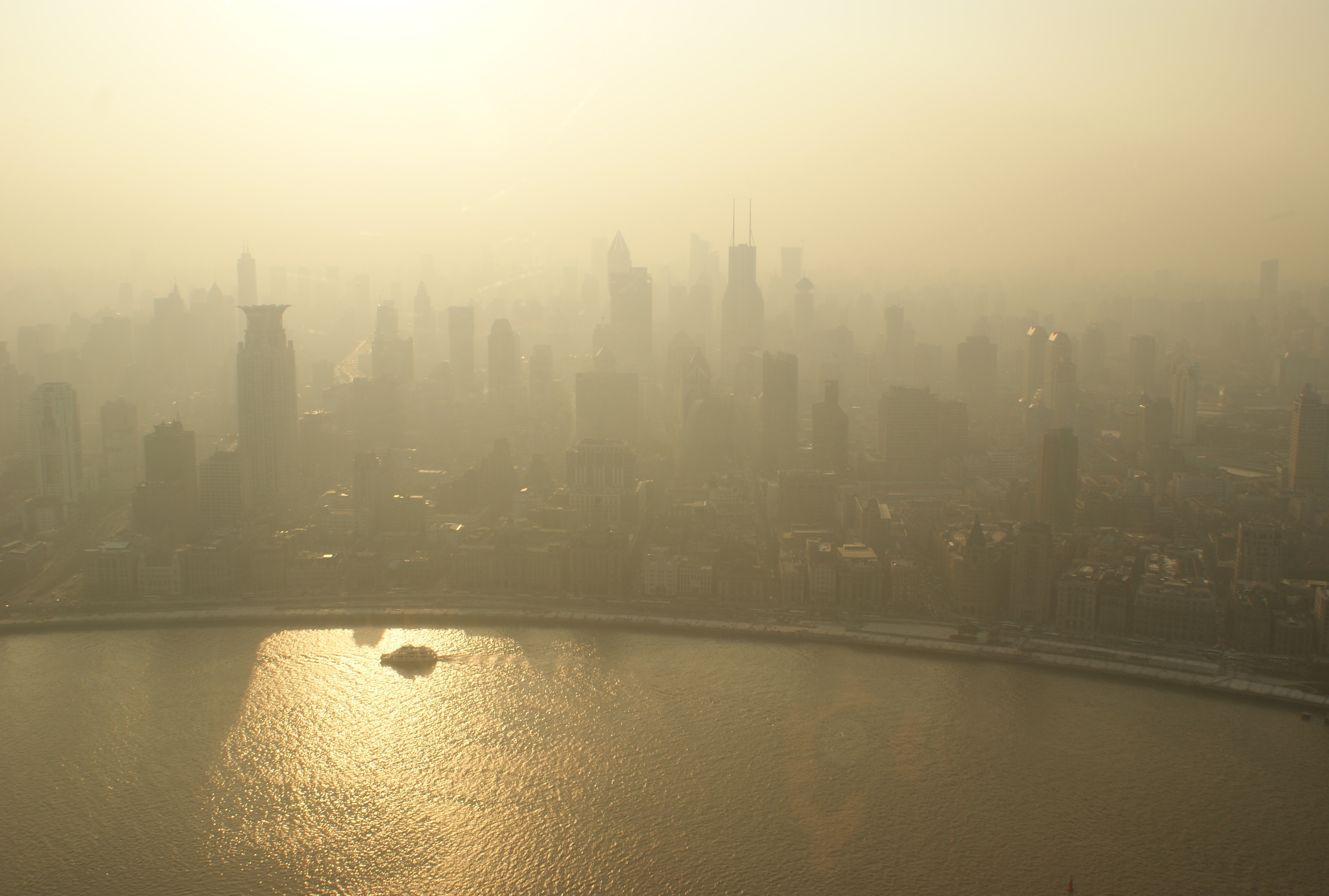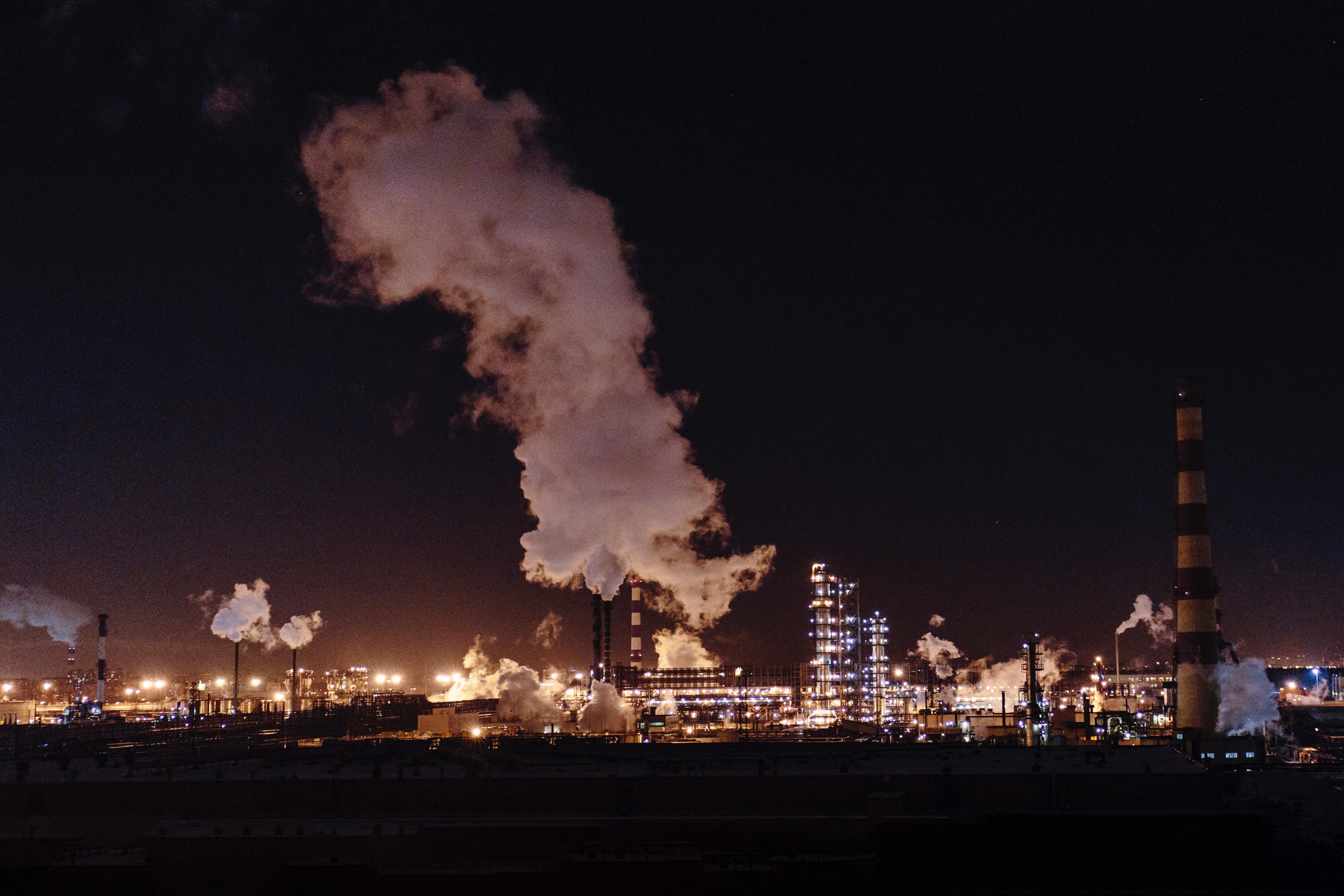This World Environment Day we investigate the business and ethical cases for reducing air pollution, and present a tool that clears the smog for the finance sector – showing just how much businesses both rely upon and affect the environment.
Take a moment and imagine biking through traffic. You pedal briskly on the edge of a stream of cars, biding your time before attempting to dive into another lane. You take a deep breath as you signal, glancing over your shoulder, already eyeing up vehicles and the exhaust fumes they are pumping out all around you.
If this is a regular part of your day, or even a faintly recognisable scene, you probably don’t need this World Environment Day to remind you about air pollution. Anyone spending time in a city you will have seen it around you, and smelt it in the air.

But World Environment Day serves to remind us that not all air pollution is as visible as emissions coming out of an exhaust pipe. Even something as seemingly innocuous as consuming an apple is likely to have contributed to air pollution – along with its transport, the apple may well have been grown at a farm using nitrogen fertiliser, whose production releases the greenhouse gas carbon dioxide, and the application of which releases ammonia. Simply reading this blog can also be traced all the way back to air pollution, with carbon dioxide being released by the production, transport and installation of the copper wires that run underground to carry the internet to your home or office, and the energy used to drive the device on which you are reading.
This air pollution carries with it serious health implications, both for us and the planet. An estimated nine out of ten people across the globe are breathing polluted air, with recent research indicating that such pollution could be damaging every organ in the human body and increasing the risk of a plethora of health conditions from diabetes to cancer. Meanwhile, greenhouse gases’ acceleration of the climate crisis is already pushing our environment and wildlife into an unprecedented decline.

What can make this all hazy for businesses is that not only do they emit various levels of air pollution – they also rely on the very environment they are polluting. Take our previous example, the apple: producing and applying the nitrogen fertiliser used to boost its growth releases both greenhouse and non-greenhouse gases, and yet farmers depend on a stable climate to ensure a strong and healthy harvest.
This tension has very real knock-on effects for the finance sector and the entire economy – as the climate crisis and environmental changes increasingly destabilise our supply chains, investments are at much greater risk.
Enter ENCORE
A new web-based tool, ENCORE (‘Exploring Natural Capital Opportunities, Risks and Exposure’) can help. Developed by UN Environment World Conservation Monitoring Centre (UNEP-WCMC) in collaboration with the Natural Capital Finance Alliance (a joint initiative between UN Environment Finance Initiative and Global Canopy), ENCORE allows global banks, investors and insurance firms to determine, for the first time, how they may be at risk from environmental degradation such as the pollution of oceans or destruction of forests.
And that risk is not insignificant – analysis presented at ENCORE’s recent launch in London showed that four of the five largest sectors in the UK (oil and gas, household goods, industrials, and health care) have a potentially high dependency on nature.
Over 2,000 users have now used the tool to find out how much business sectors are vulnerable to environmental change. FirstRand Bank in South Africa, for example, now consistently uses ENCORE to incorporate natural capital risk mitigation into all their lending and investments. They’ve added questions into their due diligence process for all new credit transactions, asking their clients how they are managing environmental risk and assessing how resilient they are to climate change and natural capital risk.
Clearing the path to a sustainable future
Alongside illustrating how businesses rely on nature, ENCORE will soon be able to complete the circle and show business impacts on nature as well. The background research is already underway with preliminary analysis for World Environment Day showing that over half of all business production processes, from automobiles to utilities, lead to air pollution (see Figure 1).

Figure 1: Number of production processes which lead to air pollution. ‘GHG’ stands for ‘greenhouse gases,’ with ‘GHG emissions’ representing the total volume of such gases as carbon dioxide and methane, while ‘non-GHG emissions’ represents the total volume of such gases as fine particulate matter and sulphur dioxide. Source: UNEP-WCMC (2019) Unpublished.
Within the production sector, the production of materials has by far the greatest contribution to air pollution (Figure 2). Paper packaging, steel, glass containers – their production all leads back to air pollution.
Next year, a new and evolved version of ENCORE will allow users to understand a whole range of business impacts on nature, including through disposal of solid waste, use of water and conversion of habitats. This will be a critical step for creating a sustainable global economy – businesses will be able to make more informed decisions about their production processes, and the finance sector will be able to conduct much more sophisticated appraisals of lending and investment opportunities by taking the values of nature fully into account.

Figure 2: Number of economic production processes with an impact on air pollution by sub-industry. Source: UNEP-WCMC (2019) Unpublished.
Global action for a global need
World Environment Day reminds us all that if we want to reduce air pollution it will require a truly global effort, across multiple sectors. The relationship between businesses and the environment may be complex, but the urgency and need for transformative change is clear.
Through international will and the support from tools such as ENCORE we can show how everyone, and every aspect of our economy, both relies upon and impacts upon the environment – and how every person, and every aspect of our economy, must be part of the solution.
Read more about the tool here.


